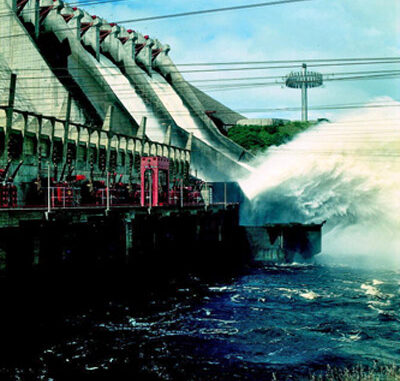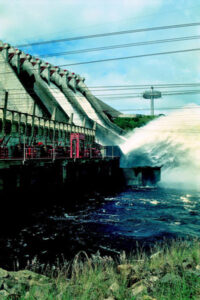

Barry Barker/McGraw-Hill Education
Water running through the Guri hydroelectric dam, Bolívar State, Venezuela
With vast petroleum deposits and an abundance of natural gas, Venezuela possesses great electric power potential, so it may not come as a surprise that Venezuela has the highest per capita rate of electricity use in Latin America. What may be surprising is that only 23 percent of the country’s power comes from petroleum or gas, while 77 percent comes from hydropower.
Hydropower is a renewable source of energy without the pollution of burning fossil fuels like coal. Because the source of hydroelectric power is water, hydroelectric power plants must be located on a water source. Water is accumulated in reservoirs created by dams, then released as needed to push against and turns blades in a turbine and spin a generator to produce electricity.
Today, Venezuela has four major working hydroelectric dams. The largest is the Guri Dam. It’s one of the largest hydroelectric plants in the world.
Explore More:
1. Hydropower is a cleaner form of energy production, but it does have drawbacks. Research what the drawbacks might be and how Venezuela’s climate could be a factor.
2. Venezuela has the largest oil reserves in the world and the second-largest natural gas reserves in the Western Hemisphere. Besides being cleaner, why do you think Venezuela chooses to use water over readily available fossil fuels?